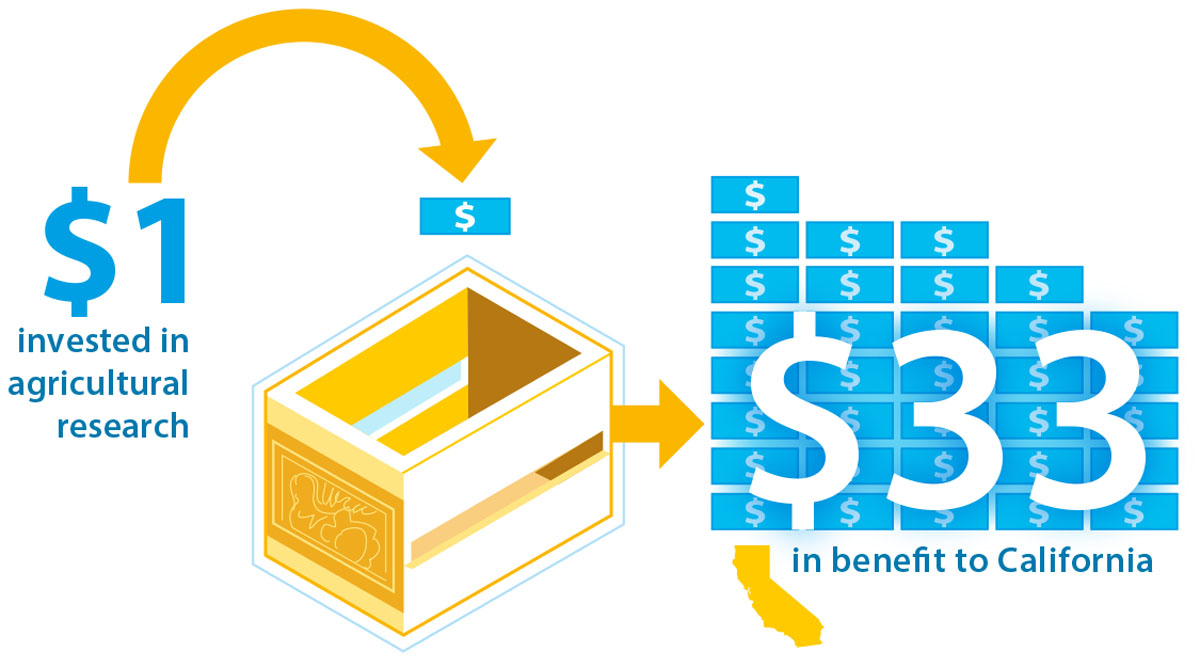All Issues
Public funding for agricultural research benefits us all
Publication Information
California Agriculture 70(2):52-52. https://doi.org/10.3733/ca.v070n02p52
Published online April 01, 2016
Full text
In February, President Obama proposed a budget for fiscal year 2017 that would double funding, to $700 million, for the Agriculture and Food Research Initiative (AFRI), the nation's premier competitive grant program for research in the agricultural sciences.
I applaud this proposal. In recent decades, federal support for agricultural research has waned, even as key international competitors like Brazil and China have increased their investments in this area dramatically.
Agricultural research helps farmers compete in the global market and meet food demand , and it is critical to the continued growth of U.S. agricultural productivity . It also addresses a host of other issues: climate change, safe drinking water, childhood obesity, the ecosystem services provided by farmland, the invasive species that damage crops and spread diseases, and many more.
Public support for research in these areas is essential and irreplaceable, and the availability of competitive grant funding helps to attract top young scientific talent to study the full range of agricultural problems.
Private sector funding for agricultural research also contributes to innovation and progress — and now exceeds USDA research spending . But business concerns tend to focus those research dollars on a few large crops, mainly corn and soybeans, and on applications likely to yield a near-term profit.
That leaves a great deal of important work reliant on public support — particularly in California, with our extraordinarily diverse agricultural sector.
Agricultural research is also an excellent investment for our economy. One in 12 jobs in America is linked to agriculture. Nationally, every additional dollar invested in USDA research returns a benefit of roughly $20. In California, the gains are even greater, with an estimated benefit of $33 per additional public dollar invested in agricultural research here.
There are countless concrete examples of how agriculture in California is benefiting from publicly supported research today.
UC ANR Cooperative Extension research and outreach has been instrumental in the development of drip irrigation, which is now used on approximately 40% of irrigated cropland in California. A recent study valued the benefit attributable to this research at between $78 million and $283 million per year.
Publicly supported research is critical to the ongoing management of invasive pests and diseases. One major current focus in California is huanglongbing (HLB) disease. Spread by the Asian citrus psyllid, HLB has damaged 100,000 acres of Florida citrus since 2007. In California, it has been found in residential citrus trees but not yet in commercial orchards. In February, USDA awarded $20.1 million for research nationwide to fight the disease, including nearly $4 million to UC Riverside, where researchers are working to develop early detection methods and HLB-resistant rootstocks to help protect California's $2.1 billion citrus industry.
With California's aquifers stressed after years of drought and subject to new rules for sustainable management , UC ANR researchers are testing the use of farm fields and orchards as percolation basins. It's a new approach to recharge depleted groundwater basins by capturing flows from rivers in winter, when water is often abundant.
This issue of California Agriculture illustrates the range of issues that researchers are tackling — from sustainable water reuse for irrigation to managing pests with fewer pesticides to promoting nutrition and community gardens. These represent just a sample of the ways that agricultural research continues to contribute to the health, prosperity and security of California and the nation.






